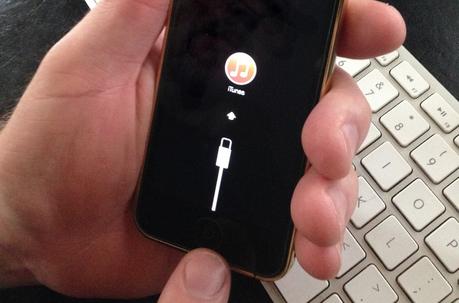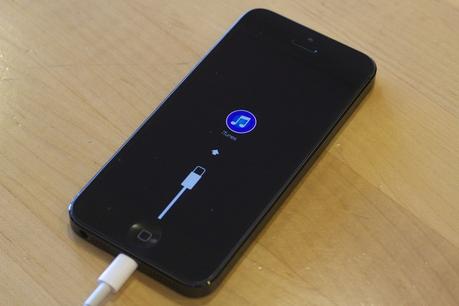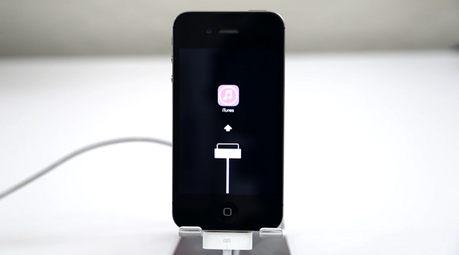The building structure of an iPad is thin, light and epic, which provides a better experience with every touch. iPads are used for many purposes as they are changing the way people look at the technological advancements.
Nowadays, iPads are used in classrooms for educating the future generation and transforming their way of learning and creating things with their farsighted vision.
With a wide range of capabilities, they can change the way we work and accomplish our goals. Users need to stay aware of some basic troubleshooting like how to get the iPhone out of recovery mode or how to reboot it.
An iPad can perform other functions like games, reference, GPS navigation, social networking, etc. By downloading and installing apps in the year 2016, the App Store has more than 500,000 native apps by Apple and third parties. The latest versions of iPads are iPad Pro and iPad Air2.
Basic info about DFU and Recovery Mode:

Gadgets are highly unreliable these days. Even Apple’s capable devices like iPads and iPhones can become useless due to many reasons as they are simple machines. And undergoing that situation makes us irritable and unmanageable.
But with patience and following the right method, we can get rid of any problem easily.
This article will give you a stepwise procedure on how to put your iPad or iPhone out of restore mode.
Before we go further, let’s simplify the difference between DFU mode and Recovery mode as many users sometimes get confused between these terms:
- When you put your iPhone or any other iOS device in Recovery mode, it will load iBoot, a boot loader that allows it to reinstate the iOS device from its present or latest firmware version.
- DFU mode is used to avoid the normal restoring procedure and allows you to achieve other more progressive operations, such as loading custom firmware on your iOS device and even to demote it from its current iOS version.
How to Get iPhone out of Recovery Mode

When the iOS update and installation gets destroyed on your iPad, it inescapably goes into recovery mode. This mode loads iBoot, which always checks and looks for any errors.
The recovery method is established for iOS software so that your devices cannot be impaired any further. This article will further illustrate points on
This article will further illustrate points on how to get the iPhone out of restore mode. An iPhone usually gets stuck only in few situations:
- First, you intentionally activate recovery mode to solve a problem
- Second, you try to jailbreak and something goes wrong.
- Thirdly, you attempt to update the latest iOS software.
This article will update you with few effortless ways to fix iPhone stuck in recovery mode. There are 3 methods to get iPhone out of recovery mode:
Method 1: Using iPhone Data Recovery
Step 1- Download iOS Data Recovery software and install it according to your computer OS.
Step2 – Open iPhone Data Recovery, plug-in the iPhone via a USB cable. The line will show up saying – “Your device is not in normal mode”.
Step 3- Turn off and on the iPhone and after turning it on you will see a button “Restart the device” at the bottom. Click it and your phone will resume automatically.
Wait until it finishes the process. The next thing to do is to get back those data erased during updates or other procedures with the help of iPhone Data Recovery.
Step 4- Restore iPhone files directly from the device and for this, you have to follow three steps:
1) Enter DFU Mode
If you know what DFU is, then click “Start Scan.” And if you do not have any idea, then follow the instructions:
- Get your iPhone and click “Start” at the interface of the software.
- Press “Power” and “Home” buttons simultaneously for just 10 seconds. The program will start the countdown for you.
- After the countdown ends, let go of the “Power” button right away, but not the “Home” button. After another 10 seconds, you’ll be knowledgeable that you’ve efficiently entered the DFU mode and you can release the “Home” button now.
2) Scan for iOS 9 Data. Hold onto the iPhone linked; click the green button “Start Scan” and wait for a minute.
3) Save iPhone Data to Your Computer. Preview the files first and select the exact items you want. At last, tap the button “Recover” to end the whole procedure.
The above is the entire guide to backup files with iPhone Data Recovery. You should ensure to do iPhone data backup regularly so that you can easily restore what you want from the backup files.
Method 2: Using iTunes

This practice will get your iPhone out of Recovery Mode but will bring back the iPhone in the process. It will erase everything on the iPhone, but support will be generated during the Restore process, allowing you to recover your data.
Step 1 – Open iTunes on your computer.
Step 2- Attach your iPhone to your computer using its USB cable.
Step 3- Click OK when you see it on screen in iTunes
Step 4- Select your iPhone from the list of buttons at the top of iTunes.
Step 5- Click the Restore button and follow the reminders to make a backup of your iPhone before restoring.
Step 6- Wait for the backup and restore process to finish as this can take several minutes.
Step 7- Select “restore from backup” in iTunes after the phone has reinstated. It will allow you to choose the backup you just created and loaded it back on the phone.
Method 3: Using Tiny Umbrella
Tiny Umbrella is a podium that restores your iOS firmware. There is no promise that you won’t lose your iPhone data during this procedure, but it is a way to recover deleted iPhone data from your device or iPhone backup file.
Step 1- Download Tiny Umbrella selecting any of the Windows or Mac version.
Step 2- While your iPhone is trapped in recovery mode, link it to the computer using your iPhone USB cable.
Step 3- Open Tiny Umbrella and after a few moments it will identify your device; it will also register that your iPhone is in retrieval mode.
Step 4- As soon as the software recognizes that your iPhone is in recovery mode, the ‘Exit Recovery’ button below will be seen on the screen. Click this button to get your iPhone out of recovery mode.
Afterward, your device should begin to boot up as usual.
Now that you know how to get iPhone out of recovery mode, you can do it on your own without any kind of technical assistance.

